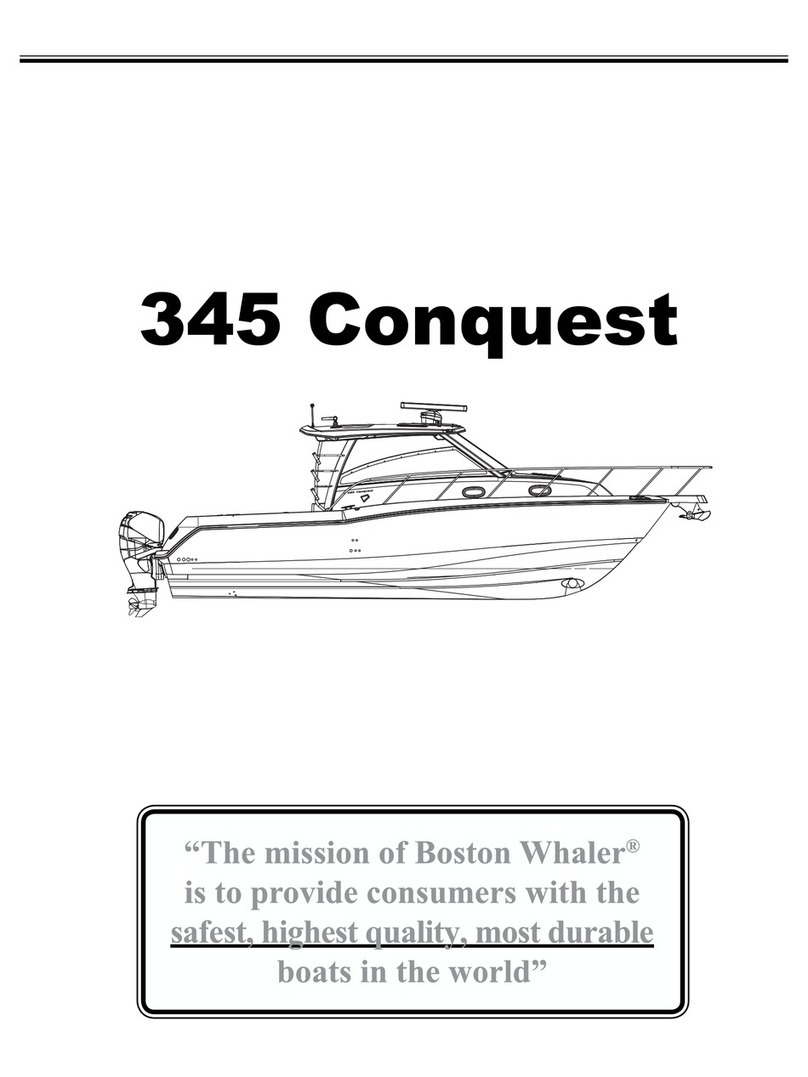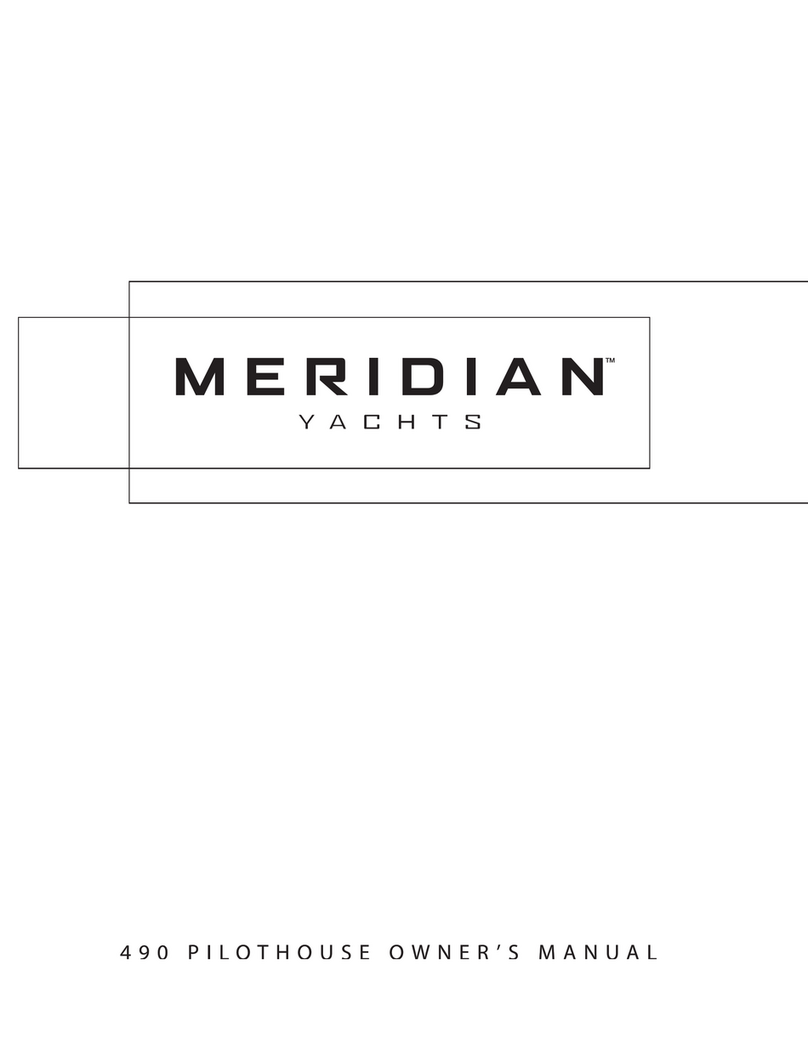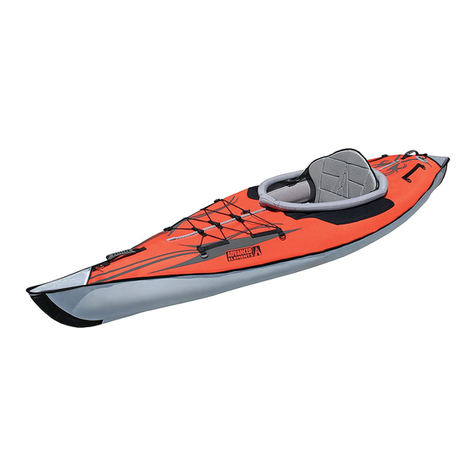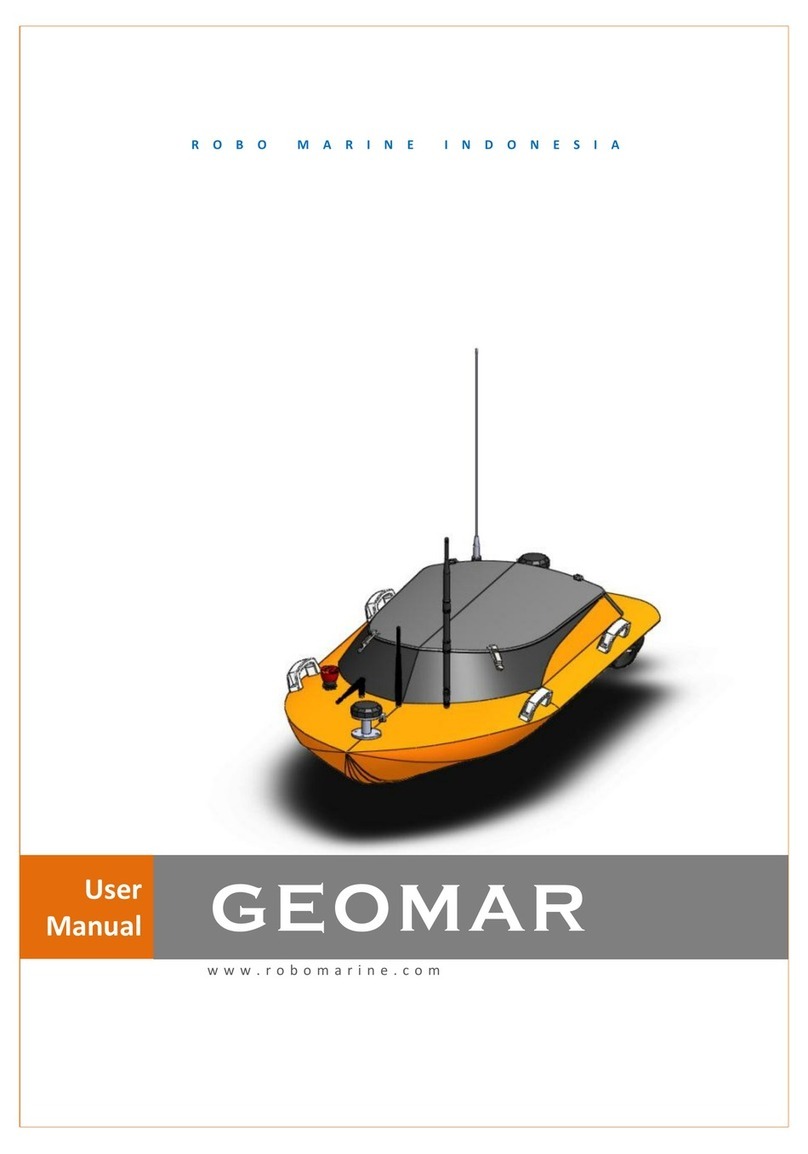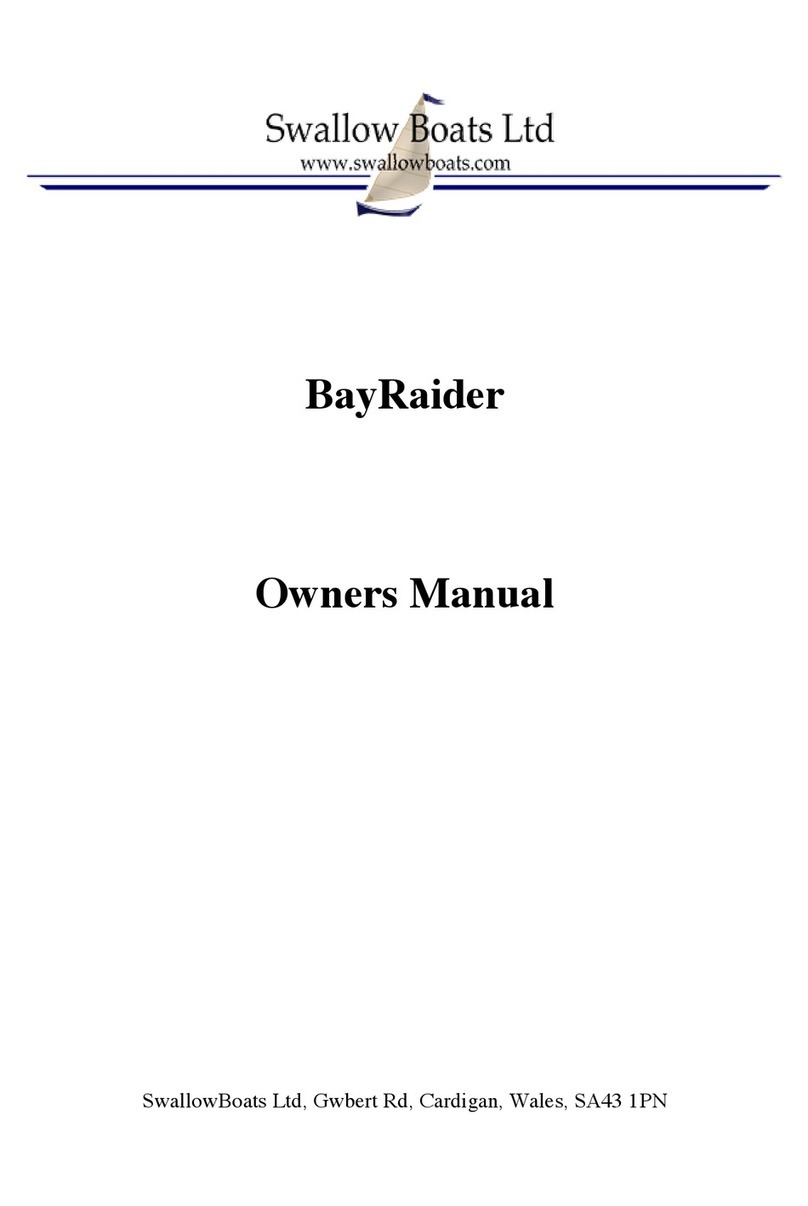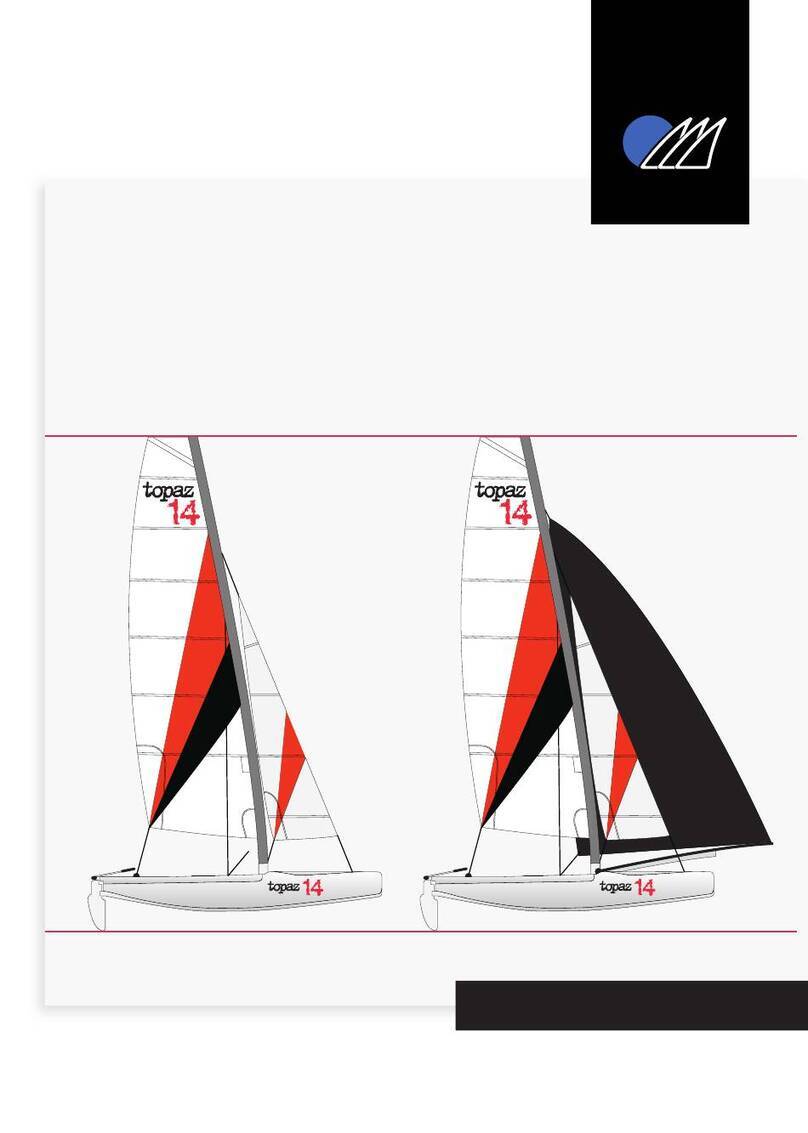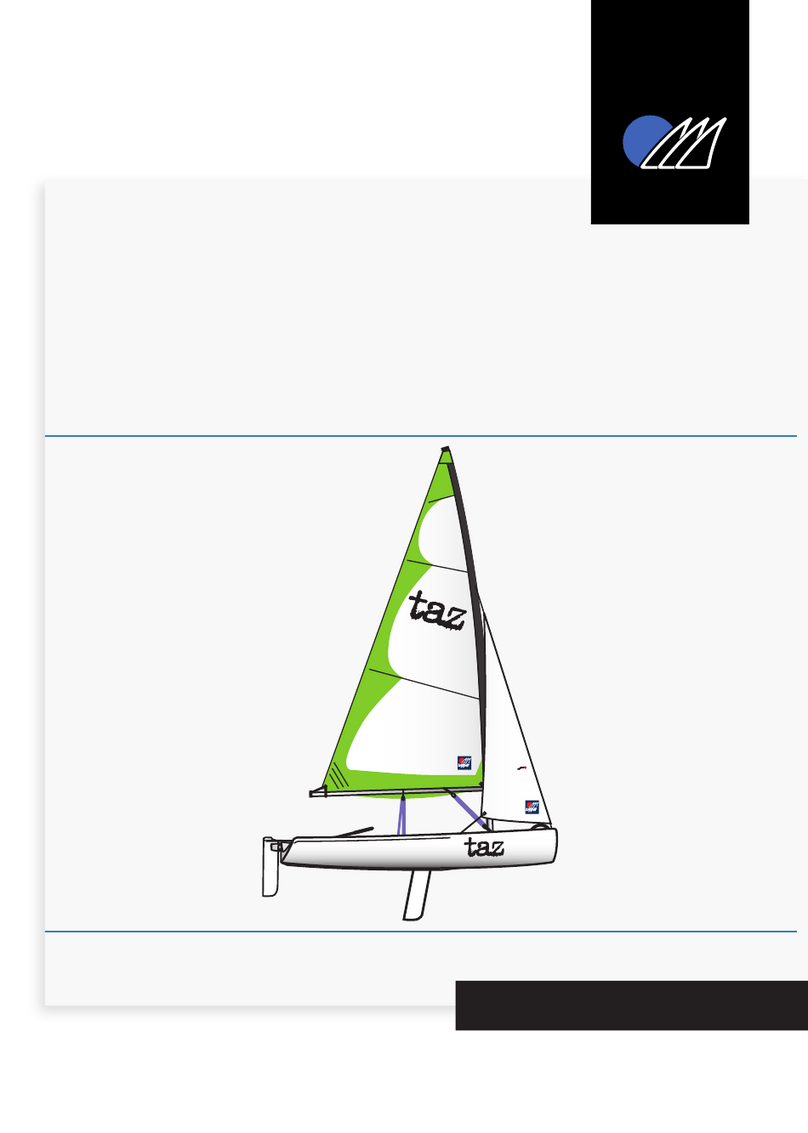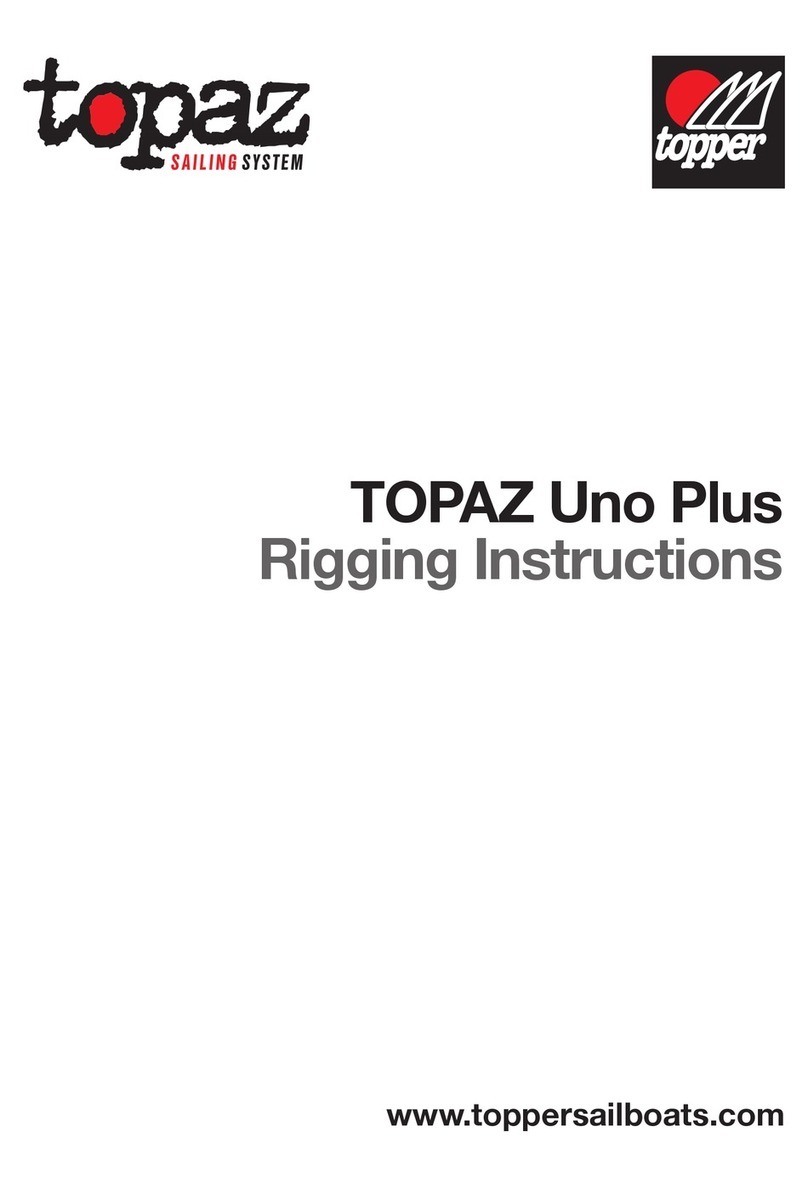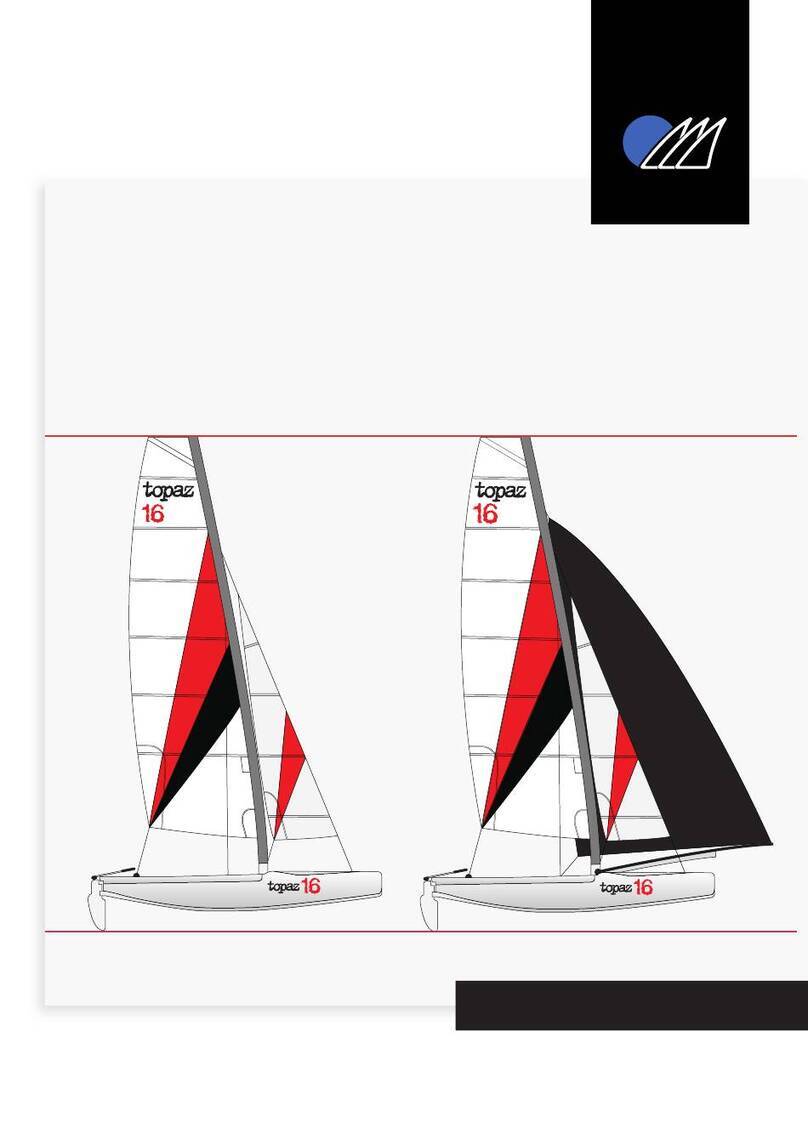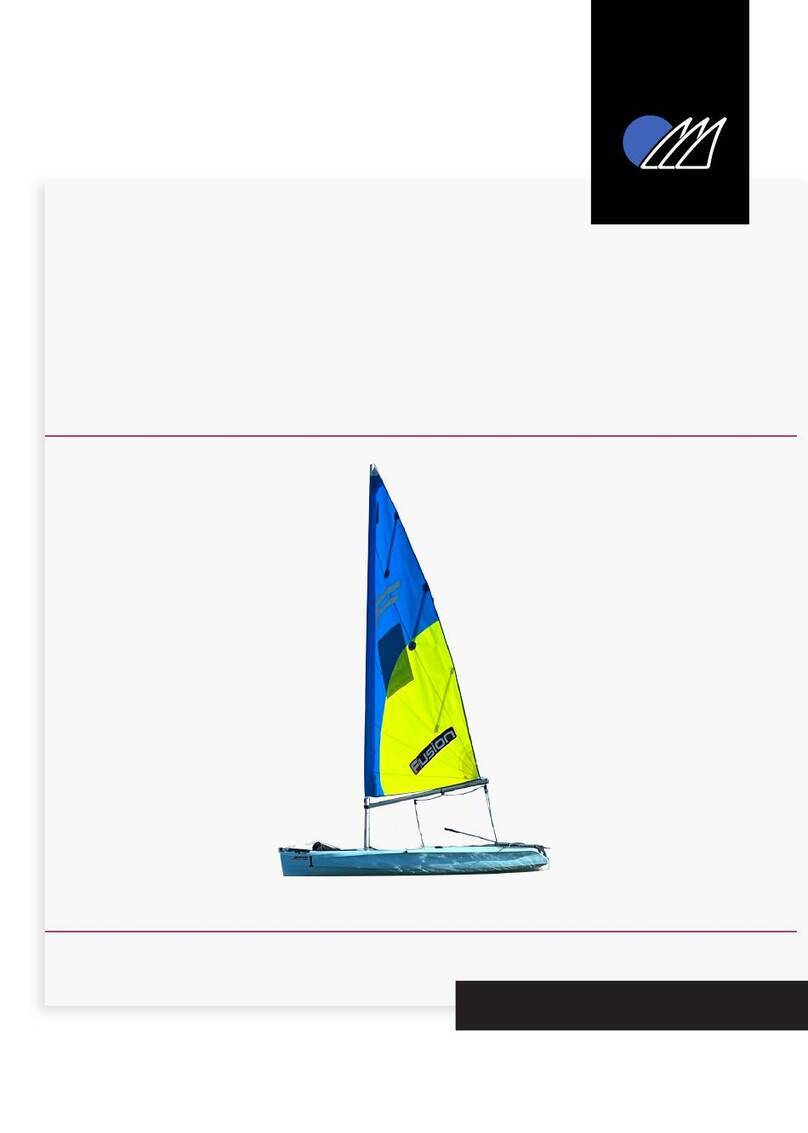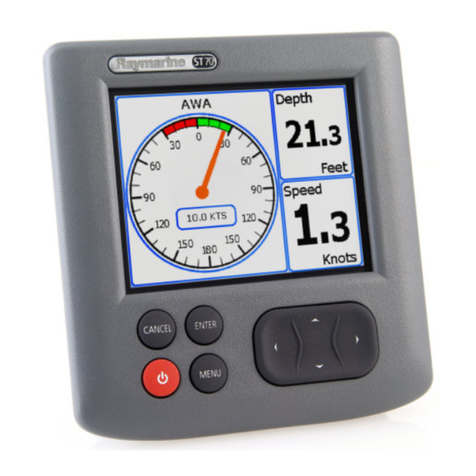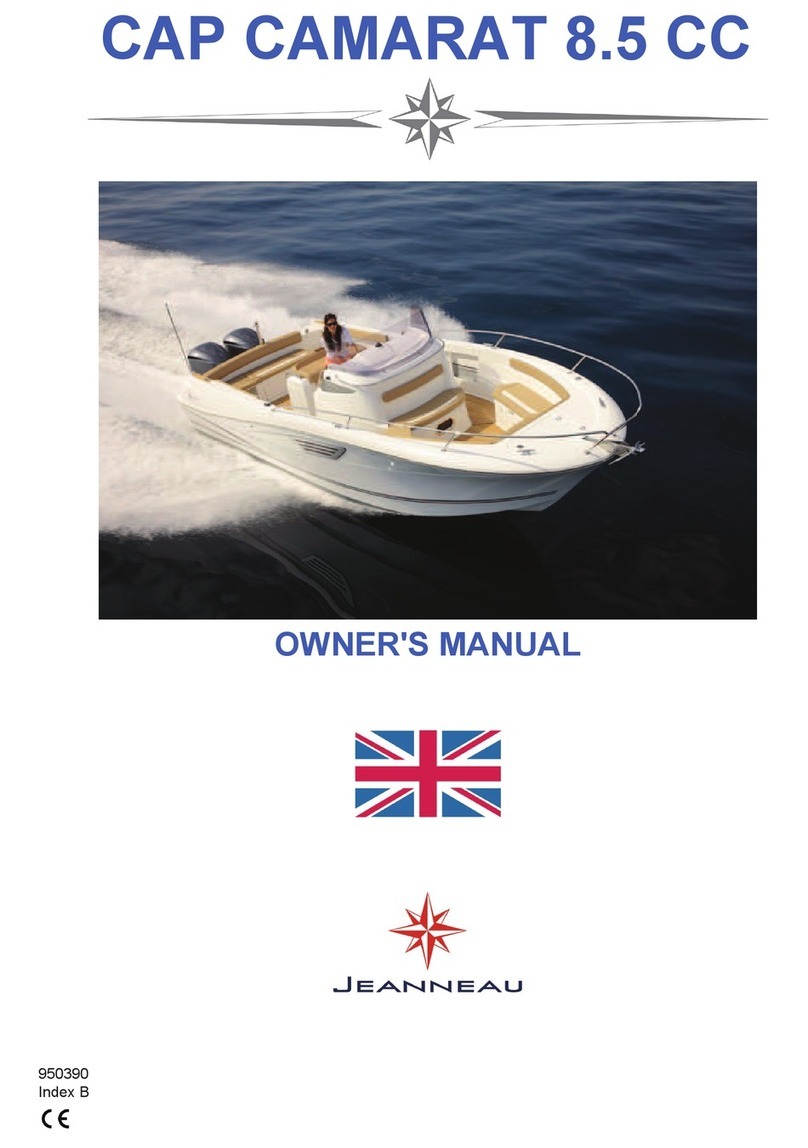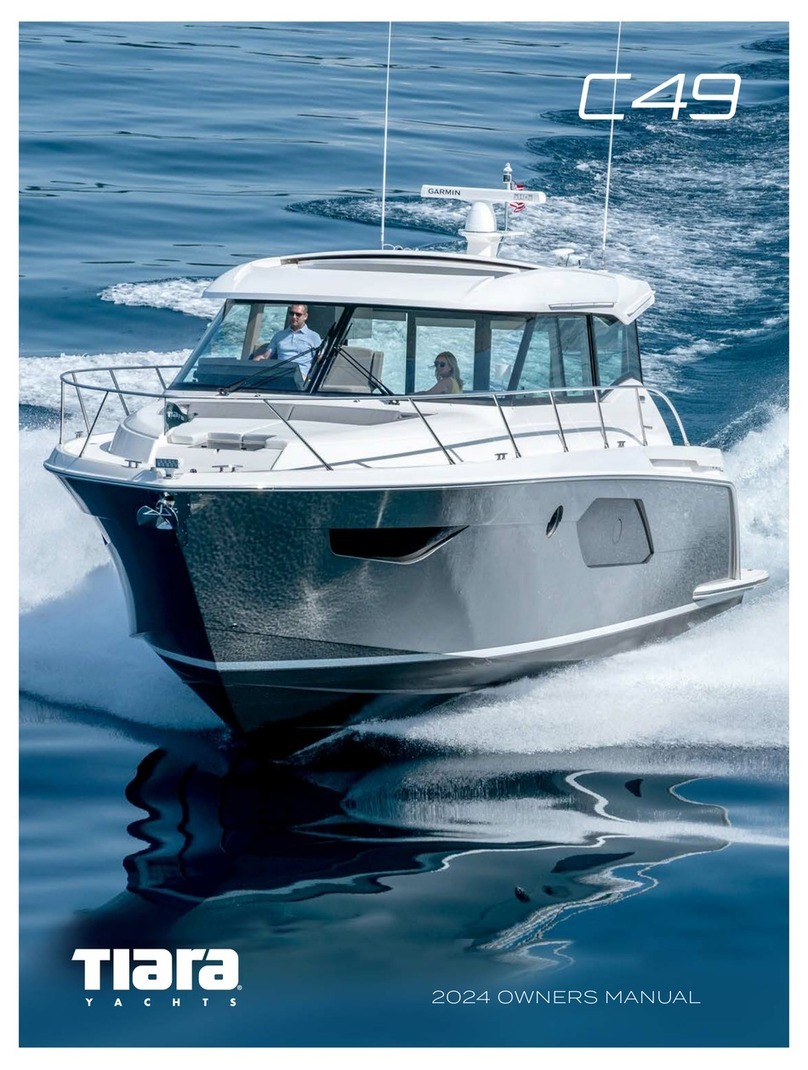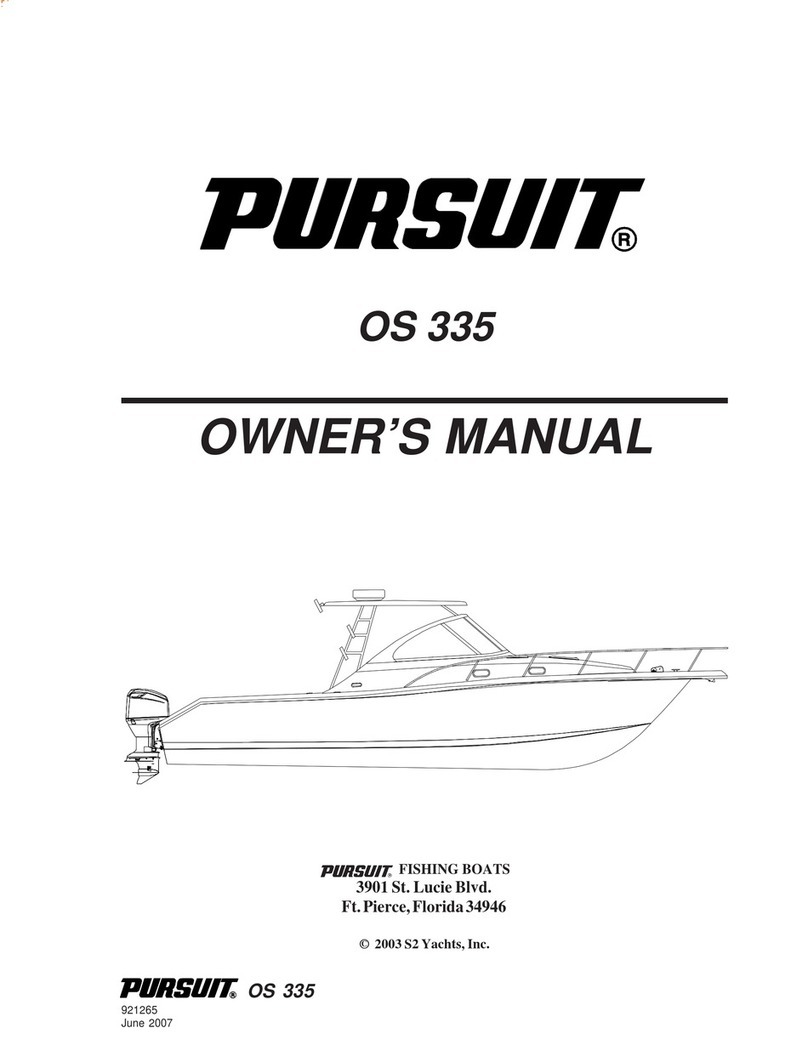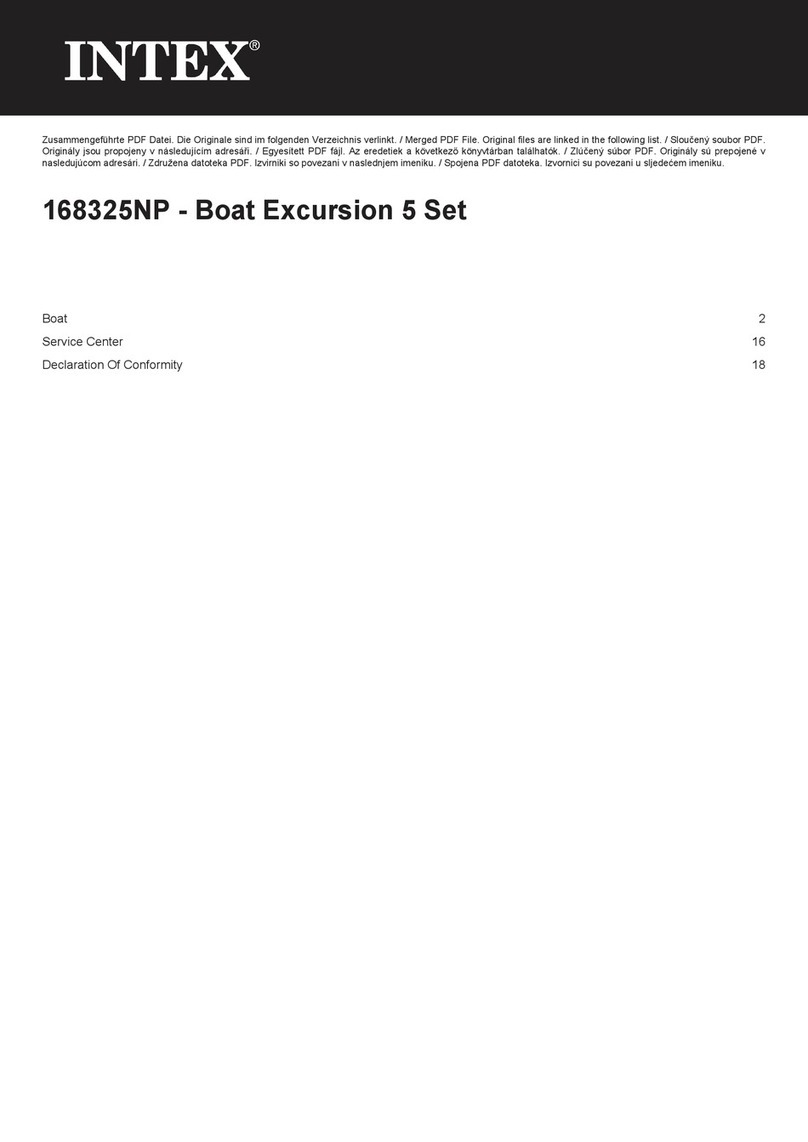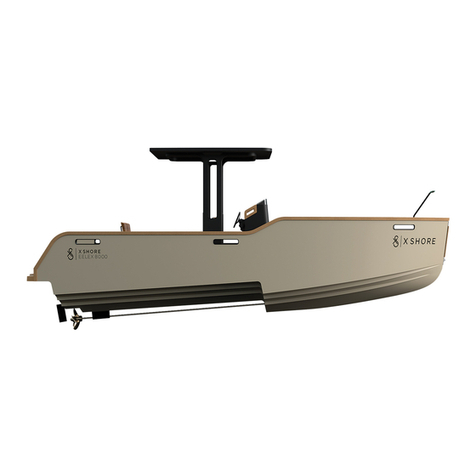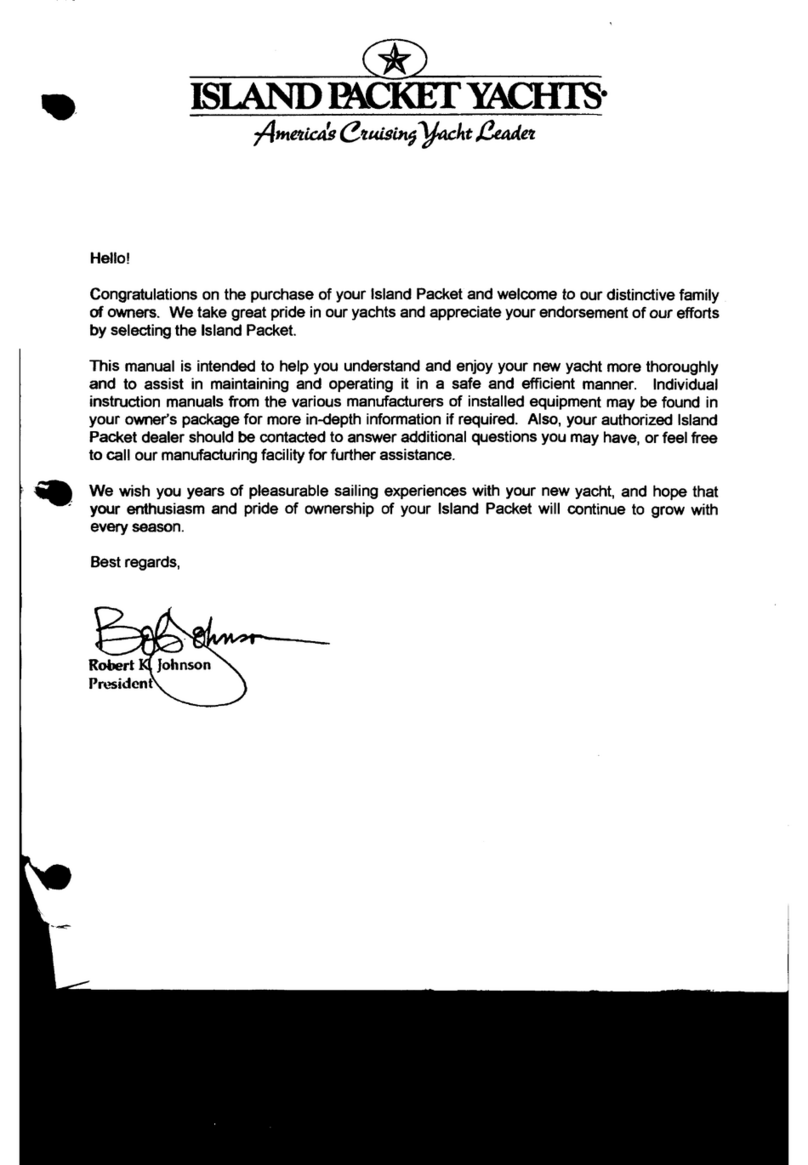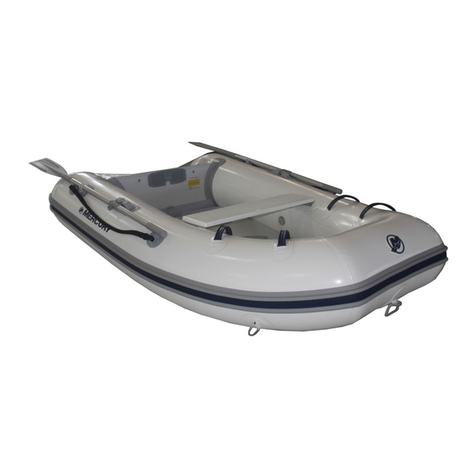
1
»Introduction
»Manufacturers Details
»Maintenance
»Glossary
»Raising the Mast
»Attaching the Boom and Gnav
»Raising the Jib
»Rigging the Mainsail
»Reeng the Mainsail
»Rudder
1
1
2
3 - 4
5 - 6
6 - 7
7 - 9
10 - 11
11 - 12
12
These RIGGING INSTRUCTIONS have been compiled to help you
to rig your Topaz RANGER sailing dinghy. Please also ensure that
you refer to your TOPAZ OWNERS MANUAL.
The OWNERS MANUAL has been compiled to help you to operate
your craft with safety and enjoyment. It contains details of the craft,
the equipment supplied or tted, it’s systems and information on its
operation and maintenance. Please read it carefully and familiarise
yourself with the craft before using it.
If this is your rst craft, or you are changing to a type of craft you are
not familiar with, for your own comfort and safety,
please ensure that you obtain handling and operating experience
before assuming command of the craft. Your dealer
or national sailing federation or yacht club will be pleased to advise
you of local sea schools, or competent instructors.
PLEASE KEEP THE RIGGING INSTRUCTIONS AND THE OWNERS
MANUAL IN A SECURE PLACE AND HAND THEMOVER TO THE
NEW OWNER WHEN YOU SELL THE CRAFT.
For further information, spares and
accessories, please contact the
manufacturer:
TOPPER INTERNATIONAL LTD,
Kingsnorth Technology Park,
Wotton Road, Ashford, Kent TN23 6LN
Telephone +44 (0) 1233 629186
email info@toppersailboats.com
contents
introduction
